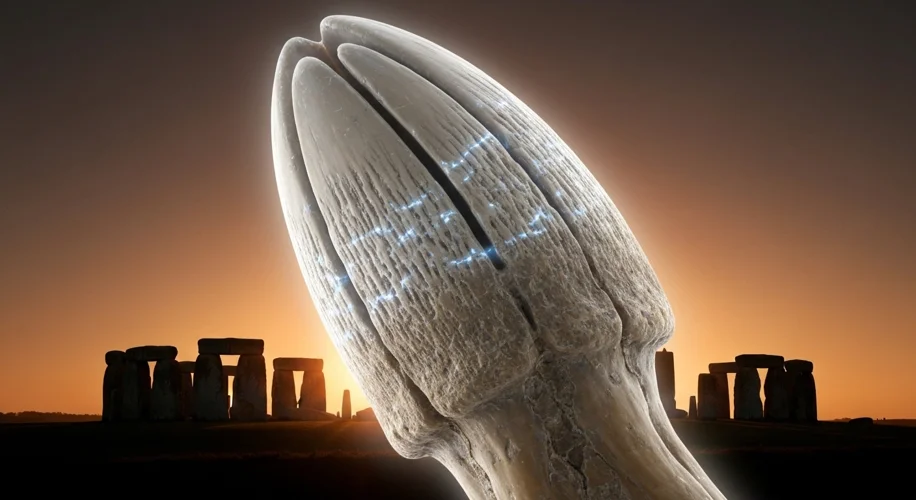Imagine standing before the colossal stones of Stonehenge, a monumental enigma that has baffled historians and archaeologists for centuries. Its sheer scale and the mystery of its construction have ignited countless theories, from druidic rituals to ancient alien intervention. But what if a single, unassuming cow tooth could offer a profound glimpse into the lives of the very people who toiled to erect this prehistoric marvel?
For years, the prevailing narrative painted Stonehenge as a sacred site, a temple aligned with celestial events, built by a sophisticated, unified society. However, groundbreaking research, particularly studies focusing on isotopic analysis of human and animal remains found at the site, has begun to weave a richer, more complex tapestry of its origins and the people who built it.
One such remarkable piece of evidence comes in the form of a tiny cow tooth. This is not just any piece of bone; it’s a time capsule, carrying within its microscopic structure the chemical echoes of an animal’s life and, by extension, the environment and the people who interacted with it. By analyzing the stable isotopes of elements like strontium, oxygen, and carbon within the tooth, scientists can reconstruct the animal’s diet and migratory patterns, and crucially, infer the origins of the people associated with it.

The findings from such analyses have been nothing short of revolutionary. They suggest that the massive stones of Stonehenge weren’t solely the product of a local workforce. Instead, the evidence points towards a mobile, perhaps even nomadic, population, with individuals migrating considerable distances, bringing their livestock, including cows, with them. This challenges the long-held belief of a settled, agrarian society solely responsible for Stonehenge’s construction.
The isotopic signatures revealed by the cow tooth, and other animal and human remains, indicate that the animals—and likely their owners—were not born in the immediate vicinity of Salisbury Plain. They were travelers, their bones telling tales of journeys across Britain, possibly as far as Wales, where the bluestones used in Stonehenge’s construction are believed to have originated. This suggests a society where people and their herds moved seasonally, perhaps following resources or trade routes, and that Stonehenge itself might have been a focal point for these peripatetic groups.
This revelation paints a picture of a vastly different Neolithic Britain than previously imagined. Instead of a single, organized effort by a stationary community, the construction of Stonehenge appears to have been a multi-generational, potentially multi-tribal undertaking. The people involved may have been drawn to the site for its spiritual significance, its role as a meeting place, or its connection to ancient routes. The cow tooth, in this context, becomes a silent witness to these complex movements and interactions.
The implications of this research are profound. It shifts our understanding of Neolithic social structures, suggesting a greater degree of mobility and interconnectedness than previously assumed. It raises questions about the organization required to coordinate such large-scale projects with people coming from diverse backgrounds and possibly speaking different dialects. Who organized these efforts? What was the social contract that bound these disparate groups together for such a monumental task?
Furthermore, the study of these ancient diets, revealed through the isotopic composition of teeth like our cow’s, provides insights into the agricultural practices and the broader ecosystem of the time. It helps us understand what these people ate, how they sustained themselves, and how their livestock fit into their economy and society.
The humble cow tooth, often overlooked in the grand narrative of human achievement, stands as a powerful testament to the scientific detective work that continues to unravel the mysteries of our past. It reminds us that history is not just written in grand monuments, but also preserved in the smallest fragments, waiting for us to listen to their silent stories. The story of Stonehenge is still unfolding, and a single cow’s tooth has just added a fascinating new chapter.

